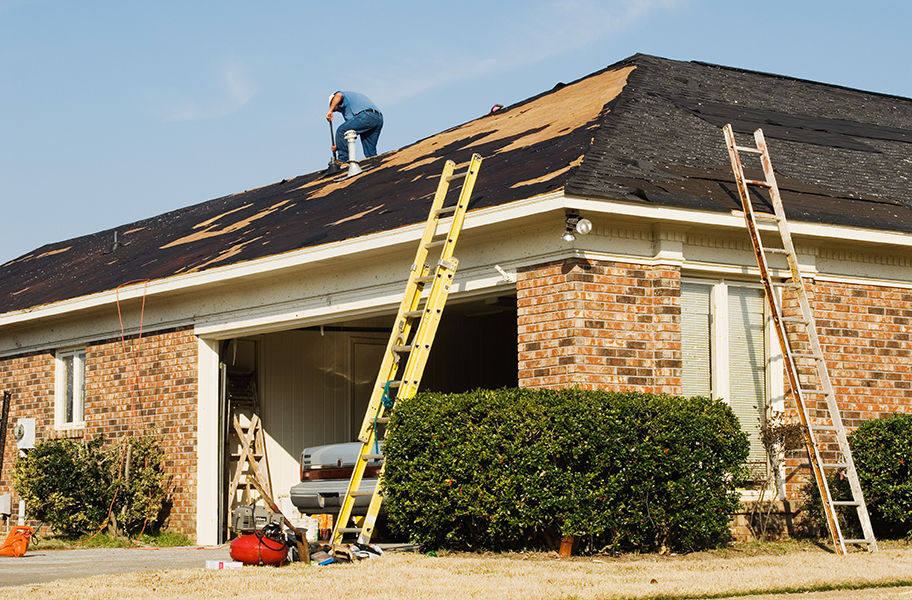Commercial Glossary Roofing Terms
As a Las Vegas roofing company, each industry has its jargon, keywords, and phrases. Here at Elite Las Vegas Roofing we also have commercial glossary roofing terms commonly used in the business. Maybe you want a better understanding of these terms when discussing your roofing concerns with a contractor. Here are a few of the essential expressions to make your communication a little more comfortable:
Adhere
Adhere is a word you will frequently hear when it comes to commercial roofing. There are two types of materials needed to hold a roof together. When working with a built-up roof, the adhesive matter is asphalt. While applying single-ply membranes needs contact cement to keep it together.
Ballast
Ballast material uses gravity to hold a single-ply roof together and is similar to precast concrete.
Dead Level or Zero Slopes
Dead Level or zero slopes are a flat roof with no slant or slope to the drainage of the roof.
Flashing
Flashing is a material we use to seal the edges of the roof. The substance you can use around the perimeter, penetrations, on expansion joints, against walls and helps strengthen drains and valleys. If the roofing materials interrupted or terminated you, need to use flashing to keep it protected and secure.
Infrared Thermography
For measuring temperature differences in the material on the roof many roofers, use an infrared camera. With infrared thermography, we can determine if there is moisture trapped in the insulation below the roofing material.
Insulation
Insulations used to keep heat in during the colder months and keep the house nice and refreshed in summer. Every roof needs an excellent insulating material to help reduces your cooling and heating costs.
Heat Welding
When sections of polymer modified bitumen or thermoplastics need bonding together, we use hot air or flame and pressure to fuse the layers together.
Membrane
The membrane material has waterproofing components and helps prevent water from entering the roof leading to water build up and leaks over time. Do you have a water leak? There is an excellent possibility that the roof will need some membrane and durable compound used together to form a water barrier for the roof.
Penetration
The term can refer to a break in materials on the roof found in the skylight, HVAC, vent stack and more. Furthermore, it can relate to the stability of the bituminous material.
Ply, Ponding and Positive Drainage
Ply is a layer of felt, sheet, or reinforcement you find in a roof membrane or system. Ponding is an excess amount of water that gathers or stands in the low-lying areas of the roof. Positive drainage is a roof with a purposefully designed roof slope to help with proper drainage within hours of a rainfall.
Roof Slope
A roof slope is an angle the roof makes against the horizontal surface. Sometimes a roof slopes expressed as the ratio of the rise to run. When viewing a house with a covering built in the mountains, the design of the roof has a 12-inch increase for every one foot of run. The roof has a steep pitch and helps heavy loads of snow to slide off the roof. Additionally, this prevents the snow from collapsing the roof.
Seam
When it comes to installing a commercial roof, you cannot fit one big sheet of material and needs overlapping seams. You usually find leaks taking place at these seams and needs a protective covering to prevent leakage from happening.
Underlayment
The underlayment is a sheet of material installed in between the roof deck and roofing system. The materials an asphalt-saturated felt used in steep-slope roof constructions. What the matter does is separate the substance from the deck and sheds water or provides secondary weather protection.
Vapor Retarder
The vapor retarder material helps prevent vapor build-up from passing through roofing material layers causing damage in the end.
Wind Uplift
The term is when the winds deflected away from the roof structures edges and peaks. When there is a severe wind, it causes a drop in the air pressure above the surface of the roof. When this happens, it can cause membrane damage as the roof edges swell or pull away from the decking.
Now you know the roof repair terminology, and we hope it helps you to understand what your roofing contractor is saying. Do you have any roofing repair questions or need your commercial roof repaired – contact us today for a roof investigation and get that annoying leakage fixed.

